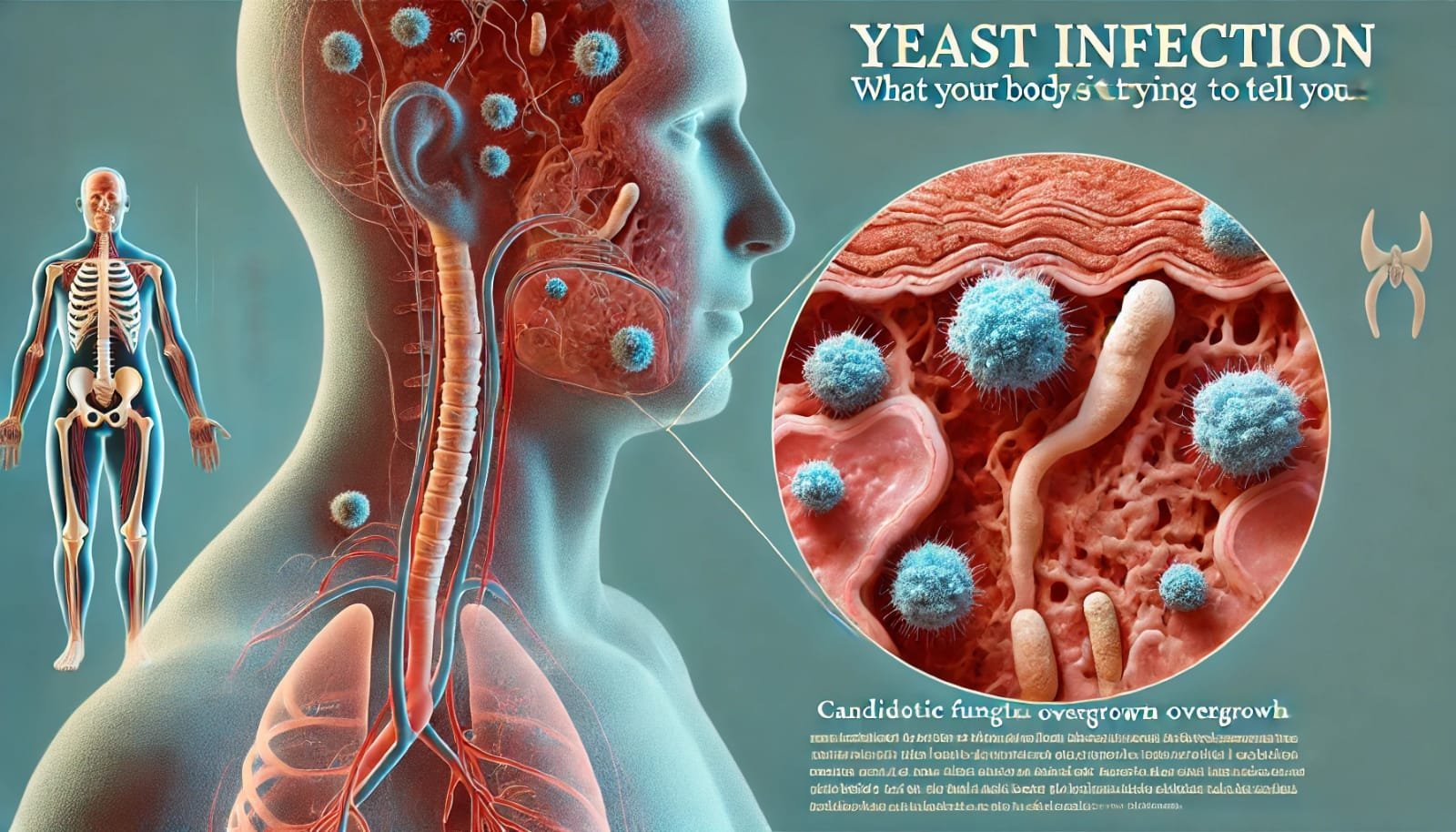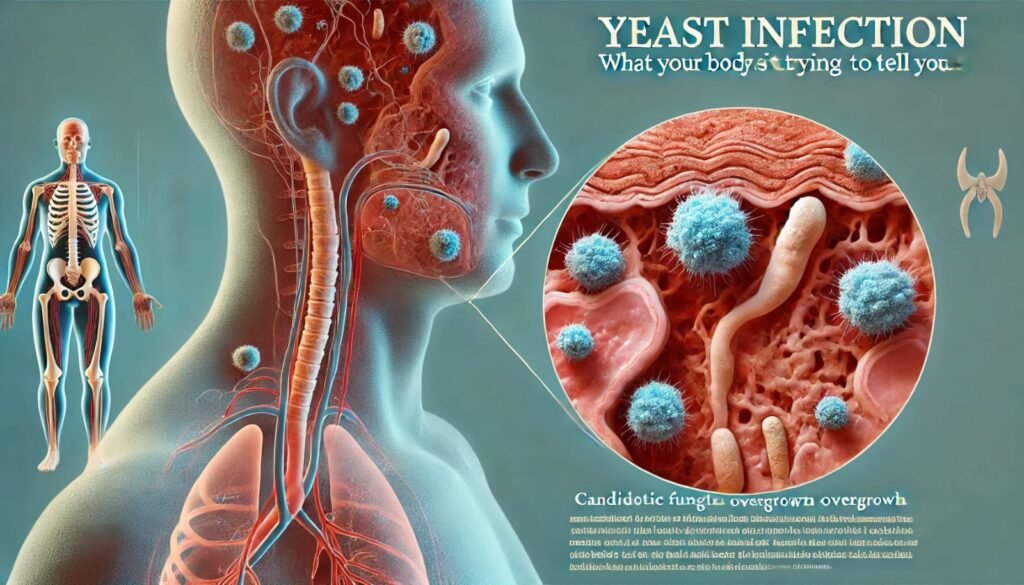Yeast Infection: What Your Body Is Trying to Tell You!
Yeast Infection: A Complete Guide
Yeast infections are a common yet frustrating health issue that affects millions of people worldwide. While they are often associated with vaginal infections in women, yeast infections can occur in men, on the skin, in the mouth, and even in the bloodstream in severe cases.
This guide will explore everything you need to know about yeast infections, including causes, symptoms, treatment options, prevention, and when to seek medical help.
What Is a Yeast Infection?
A yeast infection, medically known as candidiasis, is caused by an overgrowth of a type of fungus called Candida. Candida is naturally present in the human body, particularly in the mouth, intestines, and genital area, and usually does not cause harm.
However, when the balance of bacteria and yeast in the body is disrupted, Candida can multiply rapidly, leading to an infection.
Yeast infections can occur in various parts of the body, including:
Vagina – The most common type, also called vaginal candidiasis or vaginal yeast infection
Mouth and throat – Known as oral thrush
Skin – Appearing as cutaneous candidiasis
Penis – A condition called balanitis
Bloodstream – A rare but severe condition called invasive candidiasis
Causes of Yeast Infections
Several factors can trigger yeast infections, including:
1. Antibiotic Use
Antibiotics kill harmful bacteria but also destroy beneficial bacteria that keep yeast growth in check. This can create an environment where Candida can thrive.
2. Hormonal Changes
Fluctuations in hormones, such as those that occur during pregnancy, menstruation, or while using birth control pills, can increase the risk of yeast infections.
3. Weak Immune System
People with weakened immune systems, such as those with HIV/AIDS, cancer patients undergoing chemotherapy, or individuals taking immunosuppressive drugs, are more prone to yeast infections.
4. High Blood Sugar Levels
Diabetes, especially when not well-controlled, creates an environment that promotes yeast growth. Yeast thrives on sugar, and elevated glucose levels in the blood and urine can contribute to infections.
5. Poor Hygiene and Tight Clothing
Wearing tight, non-breathable clothing, especially in humid conditions, can create a moist environment that allows yeast to grow. Poor hygiene can also contribute to infections.
6. Stress and Lack of Sleep
Chronic stress and insufficient sleep weaken the immune system, making the body more vulnerable to infections, including yeast infections.
7. Diet High in Sugar and Processed Foods
A diet high in sugar, refined carbohydrates, and processed foods can encourage Candida overgrowth, as yeast feeds on sugar.
Symptoms of Yeast Infections
Symptoms of yeast infections depend on the affected area of the body.
1. Vaginal Yeast Infection Symptoms
Intense itching and irritation in the vaginal area
Thick, white, cottage cheese-like discharge
Burning sensation, especially during urination or sex
Redness and swelling of the vulva
Pain and discomfort
White, creamy patches on the tongue, inner cheeks, or throat
Soreness and redness in the mouth
Difficulty swallowing or a feeling of something stuck in the throat
Loss of taste
Cracking at the corners of the mouth
3. Skin Yeast Infection Symptoms
Red, itchy rash
Moist, raw, or cracked skin
Burning sensation
Small, pus-filled bumps in severe cases
4. Penile Yeast Infection Symptoms
Redness and irritation on the penis
Burning sensation
White, clumpy discharge under the foreskin
Pain during urination or sex
5. Invasive Candidiasis Symptoms
This is a serious condition that occurs when Candida enters the bloodstream. Symptoms may include fever, chills, fatigue, and organ dysfunction. Immediate medical attention is necessary.
How to Diagnose a Yeast Infection
If you suspect a yeast infection, a healthcare provider can confirm the diagnosis through:
Physical Examination – Examining the affected area for signs of infection.
Microscopic Test – Taking a swab from the affected area and examining it under a microscope.
Culture Test – Growing the yeast in a lab to determine the type and appropriate treatment.
Blood Tests – If a systemic infection is suspected, blood tests may be performed.

Treatment Options for Yeast Infections
1. Over-the-Counter (OTC) Medications
For mild cases, OTC antifungal creams, suppositories, and ointments are available. Common options include:
Clotrimazole
Miconazole
Tioconazole
These are applied directly to the affected area and usually provide relief within a few days.
2. Prescription Medications
For severe or recurring infections, doctors may prescribe:
Fluconazole (Diflucan) – A single-dose oral antifungal pill.
Nystatin – Used for oral thrush.
Topical Antifungal Creams – For skin infections.
3. Home Remedies
Some natural remedies may help, though they should not replace medical treatment:
Probiotics – Consuming probiotic yogurt or supplements can help restore bacterial balance.
Coconut Oil – Has antifungal properties and can be applied topically.
Tea Tree Oil – Used in diluted form, it has antifungal properties.
Garlic – Contains antifungal compounds, but oral consumption is preferred over direct application.
Preventing This Infections
1. Maintain Good Hygiene
Keep the genital and skin folds dry.
Avoid scented soaps, douches, and bubble baths that can disrupt pH balance.
2. Wear Breathable Clothing
Choose cotton underwear and loose-fitting clothes to prevent moisture buildup.
3. Control Blood Sugar Levels
If you have diabetes, keeping blood sugar levels in check can prevent recurrent yeast infections.
4. Strengthen Your Immune System
Eat a balanced diet, exercise regularly, and get enough sleep.
5. Limit Antibiotic Use
Only take antibiotics when necessary and follow your doctor’s instructions.
6. Avoid Excess Sugar
Reducing sugar intake can help prevent Candida overgrowth.
When to See a Doctor
While mild yeast infections can often be treated at home, seek medical attention if:
Symptoms do not improve after treatment.
Infections recur frequently (more than four times a year).
You experience fever, chills, or other signs of a systemic infection.
You are pregnant or have a weakened immune system.
Final Thoughts
This infections are common and usually not dangerous, but they can cause significant discomfort. Understanding the causes, symptoms, and treatments can help you manage them effectively.
If you experience recurrent or severe infections, consulting a healthcare provider is essential to rule out underlying health conditions. Maintaining good hygiene, a balanced diet, and a strong immune system can go a long way in preventing future infections.



